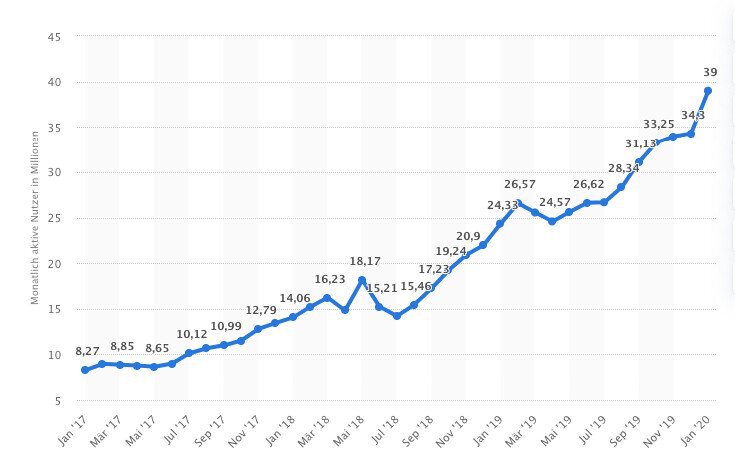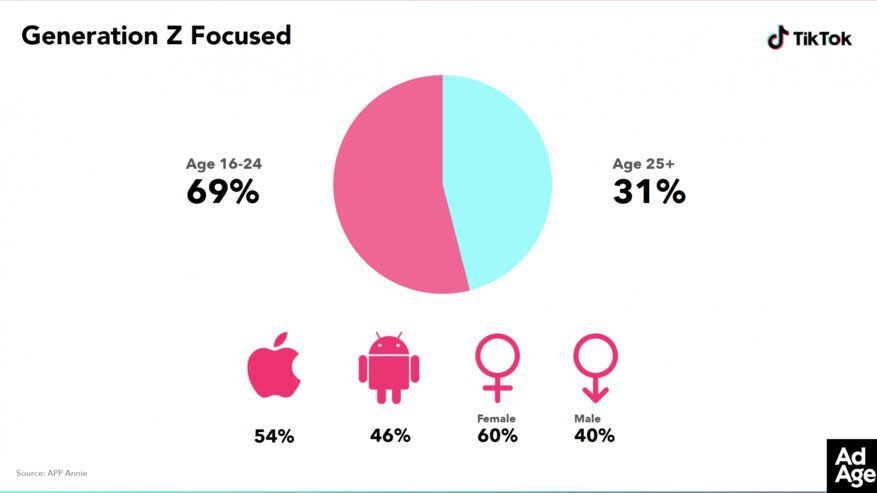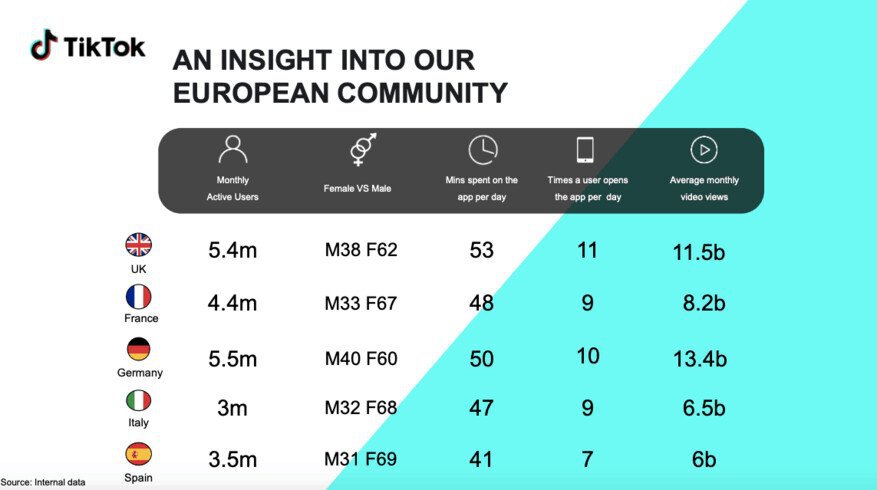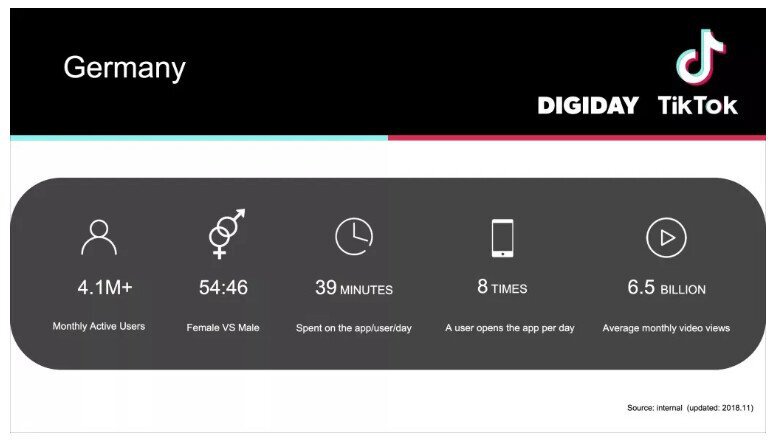
31.03.2020
TikTok
TikTok is one of the fastest growing social networks around. Many companies already use TikTok as a platform for their public relations strategy. What exactly is TikTok and how can you use the social network as a promotional tool for your company?
TikTok is a social network similar to Instagram or Facebook. Instead of pictures, however, short self-made videos with background music are shared here. People dance and/or sing along synchronously in the videos.
The origins of TikTok
TikTok or "Douyin" has existed since September 2016. The company was founded by Zhang Yiming, the founder of Beijing-based ByteDance. In November 2017, TikTok's parent company Musical.ly, another Chinese short video social platform, bought it for US$800 million. In 2018, they launched a partnership with Modern Sky to monetise music. This was followed by a name change from Musical.ly to TikTok in August 2018.
GLOBAL USER STRUCTURE
The monthly worldwide user numbers are currently around 200 million, divided between Android and iOS users.
Android users:

Source: STATISTA
iOS Users:

Source: STATISTA
Although TikTok is still nowhere near Instagram (1 billion) or Facebook incl. Messenger (2.9 billion), the rapid increase in recent months makes the network interesting. The monthly download figures for TikToks in the Playstore also speak for themselves. In February, for example, TikTok was the most downloaded app in the German Google Play Store.

Source: STATISTA
So TikTok is definitely worth a closer look.
MAINLY GENERATION Z
The network is so interesting because its users are relatively young. This is shown by statistics from the company App Annie.

Source: APP ANNIE
According to this, 69% of TikTok users are between 16 and 24 years old. This target group is highly interesting for companies, especially from a branding perspective. Companies have the opportunity here to create strong brand loyalty and retain loyal customers in the long term. In a few years, these users will have high purchasing power.
Businesses are constantly in a battle for new, loyal customers - TikTok is a great network for this.
EUROPEAN USER STRUCTURE
How does TikTok compare in Europe? The American online magazine Digiday published a pitch deck for TikTok's European market in November 2019.

Source: DIGIDAY
According to the Pitch Deck, 5.5 million Germans use TikTok every month. By comparison, the figure was 4.1 million in January 2019. Germany and the UK are the most important countries in which users generate or receive the most content.
ADDICTED TO TIKTOK
According to statistics, the average German spends 50 minutes using the internet. And that's every day! In addition, the app is opened 10 times per day. In comparison, at the beginning of 2019 it was 39 minutes and 8 app openings. On average, we Germans have 13.4 billion video views. In January 2019, this was still 6.5 billion.
Statistics early 2019

Source: DIGIDAY
The great success of TikTok is the fact that a very young target group interacts very frequently with the app, creates content and shares it. This very quickly creates viral content, i.e. content with an extremely high reach.
Companies can use this perfectly to spread their brand message with creative campaigns, e.g. with hashtag challenges.
Challenges are an essential part of TikTok content. They are also suitable as an attractive advertising measure. This is confirmed, for example, by the #PUNICADANCE advertising campaign. Users dance in their videos in split mode with Punica fruits.
More than 35,000 users produced videos under the hashtag. In total, the content reached 40 million views. The campaign had a strong impact, as they worked with TikTokers with a strong reach and created a song for the challenge.
TikTok Ads
Of course, the operators of TikTok use the popularity of the network to make a monetary profit by placing ads.
The ad placement works in a similar way to Facebook Ads. At the beginning, the campaign goal is selected and the campaign budget is set. In the next step, the various placements are selected. Ads can be placed in TikTok itself, in so-called newsfeed apps, in Vigo, an Indian image and video editing app, and in TikTok's Audience Network. Due to network usage, probably only placement in the TikTok feed itself makes sense at this point.
TikTok offers targeting by various target regions, language settings and user interests. There is no fixed age setting, but six different age levels to choose from. Due to the user structure, however, a special age restriction makes little sense. In addition, different end devices as well as connection types and operating systems can be selected.
The big difference to Facebook Ads is the creation of creatives, i.e. ad content. TikTok offers two options here. On the one hand, different ad combinations can be automatically created and tested from all the content that has already been uploaded. Machine learning is used to identify and play out the best formats. If you want to create your own content, you can use the Video Creation Kit to choose from numerous templates and create your own creatives according to specifications.
However, since TikTok focuses more on the virality of the content created by the users, it is questionable how much the ads are worthwhile.
Conclusion
TikTok is experiencing a huge rise at the moment - however, other networks also started like this before the slump came. Only time will tell whether TikTok can stay in the market in the long term. At the moment, however, it is a valuable tool for branding and customer loyalty, especially for larger companies.
Sourcess:
As a digital agency, we help you to achieve effective social media management for your company!



